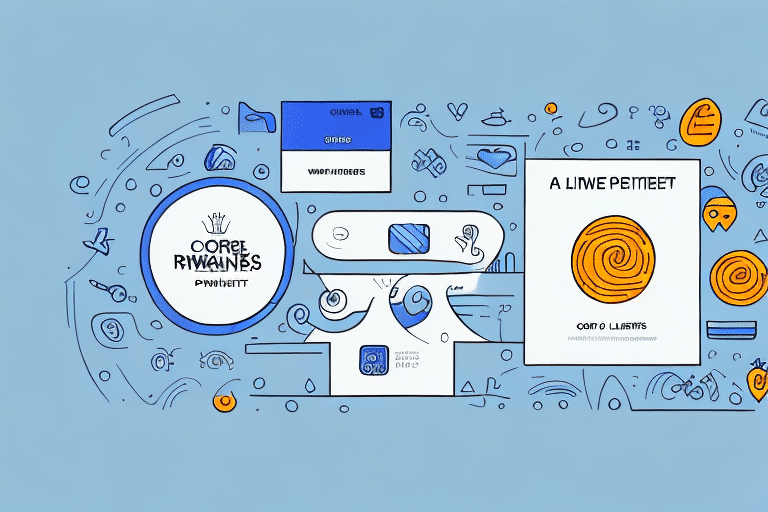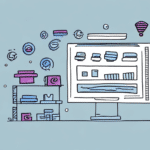Creating a Customer Retention Template for Your Business
As a business owner, enhancing customer satisfaction and loyalty is paramount for sustained growth. Focusing on customer retention—the ability to keep customers coming back over time—can significantly impact your long-term success. Developing a customer retention template enables you to track and analyze critical metrics related to retention and formulate strategies to keep customers engaged with your brand.
Why Customer Retention Matters for Your Business
While acquiring new customers is essential, retaining existing ones often proves more valuable for long-term growth and profitability. Repeat customers are not only more likely to make additional purchases but also contribute to word-of-mouth referrals and positive online reviews, attracting new customers organically.
Moreover, customer retention leads to cost savings. According to a study by Bain & Company, increasing customer retention rates by 5% can boost profits by 25% to 95%. Acquiring new customers typically requires significant investment in marketing and advertising, whereas retaining existing customers often incurs lower costs.
Focusing on your current customer base allows you to allocate resources more effectively, reducing the need for extensive acquisition campaigns and fostering a loyal customer community.
Understanding the Importance of Customer Loyalty
Customer loyalty is a cornerstone of customer retention. Loyal customers are more inclined to continue doing business with you, even when competitors offer similar products or services. Factors contributing to customer loyalty include the quality of your offerings, exceptional customer service, and a positive overall customer experience.
Personalized Marketing
One effective method to build customer loyalty is through personalized marketing. Tailoring your marketing efforts to meet the specific needs and preferences of your customers can create a deeper connection. This approach includes personalized emails, targeted social media advertisements, and customized product recommendations based on previous purchases.
Transparency and Honesty
Being transparent and honest with your customers fosters trust. Clear communication about policies, pricing, and addressing potential issues proactively shows customers that you value their business and satisfaction, reinforcing their loyalty to your brand.
Identifying Key Metrics for Measuring Customer Retention
Developing an effective customer retention strategy requires tracking and measuring your success in retaining customers. Key metrics to consider include:
- Customer Churn Rate: The percentage of customers who stop doing business with you over a specific period.
- Customer Lifetime Value (CLV): The total value of a customer's purchases throughout their relationship with your business.
- Customer Satisfaction Scores: Metrics that gauge how satisfied customers are with your products or services.
- Customer Engagement: Measures how often customers interact with your business, such as website visits, email opens, or social media interactions.
Understanding these metrics helps identify areas for improvement and assess the effectiveness of your retention strategies. Additionally, analyzing the reasons why customers leave through exit surveys or feedback can provide actionable insights to enhance your retention efforts.
Developing a Customer Retention Strategy
With the key metrics identified, the next step is to develop a comprehensive strategy to retain customers. Effective strategies include:
Loyalty Rewards Programs
Implementing loyalty programs that reward repeat customers with discounts, exclusive offers, or points can incentivize ongoing patronage and increase customer loyalty.
Exceptional Customer Service
Providing outstanding customer service ensures that customers feel valued and supported, addressing their needs promptly and effectively to enhance their overall experience.
Personalized Marketing Campaigns
Leveraging data to create personalized marketing campaigns ensures that your communication is relevant and resonates with each customer's unique preferences and behaviors.
Regular Communication
Maintaining regular contact with customers through newsletters, social media updates, or personalized messages keeps them engaged and informed about your offerings.
Continuous Improvement
Consistently updating your products or services based on customer feedback demonstrates commitment to providing the best possible experience, fostering trust and loyalty.
How to Create a Customer Retention Template: Step-by-Step Guide
Creating a customer retention template involves several strategic steps:
- Determine Key Metrics: Identify which metrics are most aligned with your business goals, such as CLV, churn rate, and customer engagement levels.
- Select Tracking Tools: Choose software or tools that can effectively track and analyze your selected metrics, such as CRM systems like Salesforce or HubSpot.
- Organize Data: Develop a system for storing and organizing data related to customer retention, ensuring easy access and analysis.
- Analyze and Interpret Data: Establish a process for regularly reviewing the data to identify trends, strengths, and areas for improvement in your retention strategies.
Regularly reviewing and updating your customer retention template ensures that you are tracking the most relevant metrics and utilizing the most effective tools and processes. Incorporating customer feedback can further refine your retention strategies, aligning them with evolving customer needs and market trends.
Tips for Designing an Effective Customer Retention Template
When designing your template, consider the following tips to enhance its effectiveness:
- Align with Business Goals: Ensure that the metrics you select are directly related to your overall business objectives.
- Use Data Visualization: Incorporate charts and graphs to make data easier to understand and interpret, facilitating quicker decision-making.
- Personalize the Template: Tailor the template to your specific audience by using language and messaging that resonates with your customers. Incorporate individual data and preferences to increase the impact of your retention efforts.
- Ensure Flexibility: Design the template to be adaptable, allowing for adjustments as your business and customer needs evolve.
Implementing Your Customer Retention Template into Your Business Model
Integrating your customer retention template into your business model involves several practical steps:
- Staff Training: Train your team on how to collect, track, and analyze retention data effectively.
- CRM Integration: Integrate your template with existing Customer Relationship Management (CRM) software to streamline data management.
- Regular Reviews: Schedule periodic meetings to review retention metrics and discuss strategies for improvement.
- Rewards Programs: Develop rewards programs that offer discounts, exclusive offers, or personalized gifts to loyal customers.
- Enhance Customer Service: Utilize feedback from your template to identify and address common customer service issues, improving overall satisfaction.
Analyzing and Improving Your Customer Retention Rates
Regular analysis of your customer retention data provides valuable insights into the effectiveness of your strategies:
- Identify Reasons for Churn: Understanding why customers leave allows you to address specific issues, such as improving customer service or product quality.
- Enhance Product Offerings: If feedback indicates dissatisfaction with your products or services, consider re-evaluating and enhancing your offerings to better meet customer needs.
- Foster Loyalty and Repeat Business: Implementing loyalty programs and personalized marketing campaigns can incentivize customers to continue their relationship with your business.
By focusing not only on preventing customer loss but also on actively fostering loyalty, you can ensure sustained customer engagement and business growth.
The Benefits of Implementing a Customer Retention Template in Your Business
Implementing a customer retention template offers numerous advantages, including:
- Improved Customer Relationships: Understanding and responding to customer needs strengthens relationships and fosters loyalty.
- Increased Sales and Revenue: Retained customers are more likely to make repeat purchases, contributing to consistent revenue streams.
- Efficient Resource Allocation: Focusing on retention reduces the need for extensive acquisition efforts, allowing resources to be allocated more effectively.
- Proactive Issue Resolution: Tracking customer behavior and feedback enables quick identification and resolution of potential issues, enhancing the overall customer experience.
- Enhanced Reputation: Satisfied and loyal customers are more likely to leave positive reviews and refer others, boosting your business's reputation and attracting new customers.
Real-Life Examples of Successful Customer Retention Templates in Various Industries
Several businesses across different industries have successfully implemented customer retention templates to enhance their retention rates:
Amazon
Amazon utilizes personalized email campaigns and targeted product recommendations to keep customers engaged. Their Prime membership program offers exclusive benefits, encouraging repeat business and fostering loyalty.
Starbucks
Starbucks' rewards program allows customers to earn points for purchases, which can be redeemed for free drinks and food items. This program not only incentivizes return visits but also provides valuable data to understand customer preferences and behaviors.
Nordstrom
Nordstrom offers a personalized styling service where customers receive one-on-one consultations with stylists. This tailored shopping experience builds strong relationships and encourages repeat business by addressing individual customer needs and preferences.
Airbnb
Airbnb implements loyalty rewards programs and host referral bonuses to encourage repeat bookings and host sign-ups. These initiatives help maintain a consistent user base and expand their community through trusted referrals.
Common Mistakes to Avoid When Creating a Customer Retention Template
When developing your customer retention template, be mindful of the following common pitfalls:
- Focusing Only on Short-Term Retention: Prioritizing immediate retention strategies without considering long-term growth can undermine sustainable success. Balance short-term tactics with long-term relationship-building efforts.
- Neglecting Important Metrics: Failing to track critical metrics like CLV, churn rate, and customer satisfaction can result in a lack of insight into your retention efforts' effectiveness.
- Lack of Personalization: Generic messages or offers may not resonate with customers. Personalize your retention strategies to address the unique needs and preferences of different customer segments.
- Inadequate Communication: Poor communication can lead to misunderstandings and reduced customer satisfaction. Ensure timely and clear communication about your products, services, and any changes within your business.
- Failing to Adapt: Markets and customer preferences evolve. Neglecting to update your retention strategies in response to changing conditions can render your efforts ineffective.
How to Adapt and Modify Your Template as Your Business Grows and Changes
Your customer retention template should be a dynamic tool that evolves alongside your business. Consider the following when adapting your template:
- Regular Reviews: Periodically assess your retention metrics and strategies to ensure they remain aligned with your current business objectives and market conditions.
- Incorporate Feedback: Use customer feedback to refine your retention strategies, addressing any emerging needs or preferences.
- Stay Informed on Trends: Keep abreast of industry trends and innovations that can inform and enhance your retention efforts.
- Scalability: Ensure that your retention strategies and tools can scale with your business growth, accommodating an increasing customer base without compromising effectiveness.
By maintaining flexibility and being proactive in refining your template, you can ensure that your customer retention strategies continue to drive business success as your company evolves.
Conclusion
Implementing a well-structured customer retention template is vital for fostering long-term loyalty and driving sustainable business growth. By tracking key metrics, developing targeted retention strategies, and continuously refining your approach based on data and feedback, you can create meaningful and lasting relationships with your customers. Prioritizing customer retention not only enhances profitability but also builds a resilient foundation for your business's future success.




















